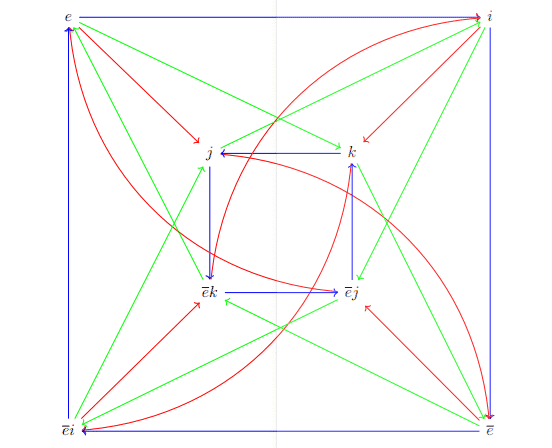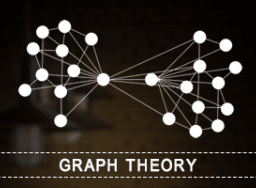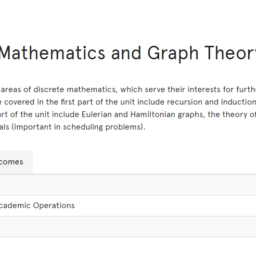MY-ASSIGNMENTEXPERT™可以为您提供 sydney MATH2069 Graph Theory图论的代写代考和辅导服务!
这是悉尼大学图论课程的代写成功案例。

MATH2069课程简介
This unit introduces students to several related areas of discrete mathematics, which serve their interests for further study in pure and applied mathematics, computer science and engineering. Topics to be covered in the first part of the unit include recursion and induction, generating functions and recurrences, combinatorics. Topics covered in the second part of the unit include Eulerian and Hamiltonian graphs, the theory of trees (used in the study of data structures), planar graphs, the study of chromatic polynomials (important in scheduling problems).
Prerequisites
At the completion of this unit, you should be able to:
- LO1. identify and use combinatorial objects involved in counting problems to solve them
- LO2. solve linear recurrence relations by using generating functions and characteristic equations
- LO3. identify Eulerian and Hamiltonian graphs
- LO4. apply special algorithms to find minimal walks in weighted graphs
- LO5. apply special algorithms to find spanning trees in graphs
- LO6. find chromatic numbers and chromatic polynomials of graphs.
MATH2069 Graph Theory HELP(EXAM HELP, ONLINE TUTOR)
Lemma 0.1 (for Exercise 1a). Let $T_r(n)$ be the Turán graph and $t_r(n)$ the number of edges of $T_r(n)$. Then
$$
t_r(n+1)=t_r(n)+n-\left\lfloor\frac{n}{r}\right\rfloor
$$
Proof. We form $t_r(n+1)$ from $t_r(n)$ by adding a vertex $v$ to a group with $\left\lfloor\frac{n}{r}\right\rfloor$ vertices, then add all edges from $v$ to vertices from other groups. There are $n$ possible neighbors of $v$, but we must subtract the vertices from the same group. Thus we add $n-\left\lfloor\frac{n}{r}\right\rfloor$ edges.
Note: The right inequality in the following proposition was not part of Exercise 1a, but I needed it for $1 \mathrm{~b}$, and it was more economical to prove both inequalities in the same proposition.
Proposition 0.2 (Exercise 1a). Let $T_r(n)$ be the Turán graph and $t_r(n)$ the number of edges of $T_r(n)$. Then
$$
\left(1-\frac{1}{r}\right)\left(\begin{array}{l}
n \
2
\end{array}\right) \leq t_r(n) \leq\left(1-\frac{1}{r}\right)\left(\begin{array}{l}
n \
2
\end{array}\right)+n
$$
Proof. We prove both inequalities by induction on $n$. The base case $n=1$ holds because $\left(\begin{array}{l}1 \ 2\end{array}\right)=0$ and $t_r(1)=0$. Assume the left inequality holds for $n=1, \ldots, k$.
$$
\begin{aligned}
t_r(k+1) & =t_r(k)+k-\left\lfloor\frac{k}{r}\right\rfloor \geq\left(1-\frac{1}{r}\right)\left(\begin{array}{c}
k \
2
\end{array}\right)+\left(1-\frac{1}{r}\right) k \
& =\left(1-\frac{1}{r}\right)\left(\left(\begin{array}{l}
k \
2
\end{array}\right)+k\right)=\left(1-\frac{1}{r}\right)\left(\begin{array}{c}
k+1 \
2
\end{array}\right)
\end{aligned}
$$
This completes the proof of the first inequality. For the second inequality, note that
$$
k-\left\lfloor\frac{k}{r}\right\rfloor \leq k-\frac{k}{r}+1
$$
Then
$$
\begin{aligned}
t_r(k+1) & =t_r(k)+k-\left\lfloor\frac{k}{r}\right\rfloor \leq\left(1-\frac{1}{r}\right)\left(\begin{array}{l}
k \
2
\end{array}\right)+k+k-\frac{k}{r}+1 \
& =\left(1-\frac{1}{r}\right)\left(\begin{array}{l}
k \
2
\end{array}\right)+\left(1-\frac{1}{r}\right) k+(k+1)=\left(1-\frac{1}{r}\right)\left(\left(\begin{array}{l}
k \
2
\end{array}\right)+k\right)+(k+1) \
& =\left(1-\frac{1}{r}\right)\left(\begin{array}{c}
k+1 \
2
\end{array}\right)+(k+1)
\end{aligned}
$$
This completes the induction for the second inequality.
Proposition 0.3 (Exercise 1b). Let $t_r(n)$ be as above. Then for a fixed $r \geq 1$,
$$
t_r(n)=\frac{1}{2}\left(1-\frac{1}{r}\right) n^2+o\left(n^2\right) \quad \text { as } n \rightarrow \infty
$$
Proof. Using the first inequality from 1a,
$$
t_r(n)-\frac{1}{2}\left(1-\frac{1}{r}\right) n^2 \leq\left(1-\frac{1}{r}\right)\left(\begin{array}{l}
n \
2
\end{array}\right)+n-\frac{1}{2}\left(1-\frac{1}{r}\right) n^2=\frac{1}{2}\left(1-\frac{1}{r}\right) n
$$
Using the second inequality from 1a,
$$
\frac{1}{2}\left(1-\frac{1}{r}\right) n^2-t_r(n) \leq \frac{1}{2}\left(1-\frac{1}{r}\right) n^2-\left(1-\frac{1}{r}\right)\left(\begin{array}{l}
n \
2
\end{array}\right)=\frac{1}{2}\left(1-\frac{1}{r}\right) n
$$
Thus
$$
\left|t_r(n)-\frac{1}{2}\left(1-\frac{1}{r}\right) n^2\right| \leq \frac{1}{2}\left(1-\frac{1}{r}\right) n
$$
Thus for a fixed $r$, the error term is bounded above by a constant multiple of $n$. Thus for any $\epsilon>0$, for sufficiently large $n$ the error is bounded by $\epsilon n^2$. (Choose $n>\frac{c}{\epsilon}$ where $\left.c=\frac{1}{2}\left(1-\frac{1}{r}\right).\right)$
Theorem 0.4 (Exercise 3, Erdos-Simonovits Theorem). Let $F$ be a graph with chromatic number $r=\chi(F)$. Then
$$
\operatorname{ex}(F, n)=\frac{1}{2}\left(1-\frac{1}{r-1}\right) n^2+o\left(n^2\right)
$$
Proof. Since $\chi\left(T_{r-1}(n)\right)=r-1, T_{r-1}(n)$ does not contain $F$ as a subgraph. Thus
$$
\begin{aligned}
\operatorname{ex}(F, n) & \geq e\left(T_{r-1 n}(n)\right)=t_{r-1}(n) \geq\left(1-\frac{1}{r}\right)\left(\begin{array}{l}
n \
2
\end{array}\right) \geq\left(1-\frac{1}{r-1}\right)\left(\begin{array}{l}
n \
2
\end{array}\right) \
& =\left(1-\frac{1}{r-1}\right)\left(\frac{1}{2} n^2-\frac{1}{2} n\right) \geq \frac{1}{2}\left(1-\frac{1}{r-1}\right) n^2
\end{aligned}
$$
This is a sufficient lower bound for $\operatorname{ex}(F, n)$. Now we obtain an upper bound. We can restate the definition of $\operatorname{ex}(F, n)$ as
$$
\operatorname{ex}(F, n) \leq x \Longleftrightarrow(e(G) \geq x \Longrightarrow F \subset G)
$$
Let $\epsilon>0$. Then by Erdos-Stone, there exists $n_0$ such that for $n_0 \geq n$,
$$
e(G) \geq \frac{1}{2}\left(1-\frac{1}{r-1}+\epsilon\right) n^2 \Longrightarrow K_r(t) \subset G
$$
for some $t \geq \epsilon \log n /\left(2^{r+1}(r-1) !\right)$. Since $\chi(F)=r$, we know that $\chi(F) \subset K_r(t)$ for sufficiently large $t$, so $K_r(t) \subset G \Longrightarrow F \subset G$. Then by our equivalence (1), for $n \geq n_0$, we have
$$
\operatorname{ex}(F, n) \leq \frac{1}{2}\left(1-\frac{1}{r-1}+\epsilon\right) n^2=\frac{1}{2}\left(1-\frac{1}{r-1}\right) n^2+\frac{1}{2} \epsilon n^2
$$
Together, our two bounds say exactly that for $n \geq n_0$, we have
$$
\operatorname{ex}(F, n)=\frac{1}{2}\left(1-\frac{1}{r-1}\right) n^2+o\left(n^2\right)
$$
(Exercise 4) A presentation of the quaternion group $Q$ of order 8 is given by
$$
\left\langle\bar{e}, i, j, k \mid \bar{e}^2=1, i^2=j^2=k^2=i j k=\bar{e}\right\rangle
$$
It is clear from the relations that we do not need $\bar{e}$ or $k$ as a generator. From the relations, we can deduce that $\bar{e}$ commutes with everything and that
$$
i j=k \quad j i=k \quad k i=j \quad i k=\bar{e} j \quad j k=i \quad k j=\bar{e} i
$$
To show that this group has order 8 , we draw the Cayley graph of this presentation. Because $\bar{e}$ is in the center, it is relatively clear how multiplication by $\bar{e}$ acts, so we omit the $\bar{e}$ arrows. We could also omit the $k$ arrows, but we include them to better appreciate the symmetry.
Blue arrows are multiplication (on the right) by $i$, red arrows are multiplication (on the right) by $j$, and green arrows are multiplication (on the right) by $k$.

MY-ASSIGNMENTEXPERT™可以为您提供 SYDNEY MATH2069 GRAPH THEORY图论的代写代考和辅导服务!





